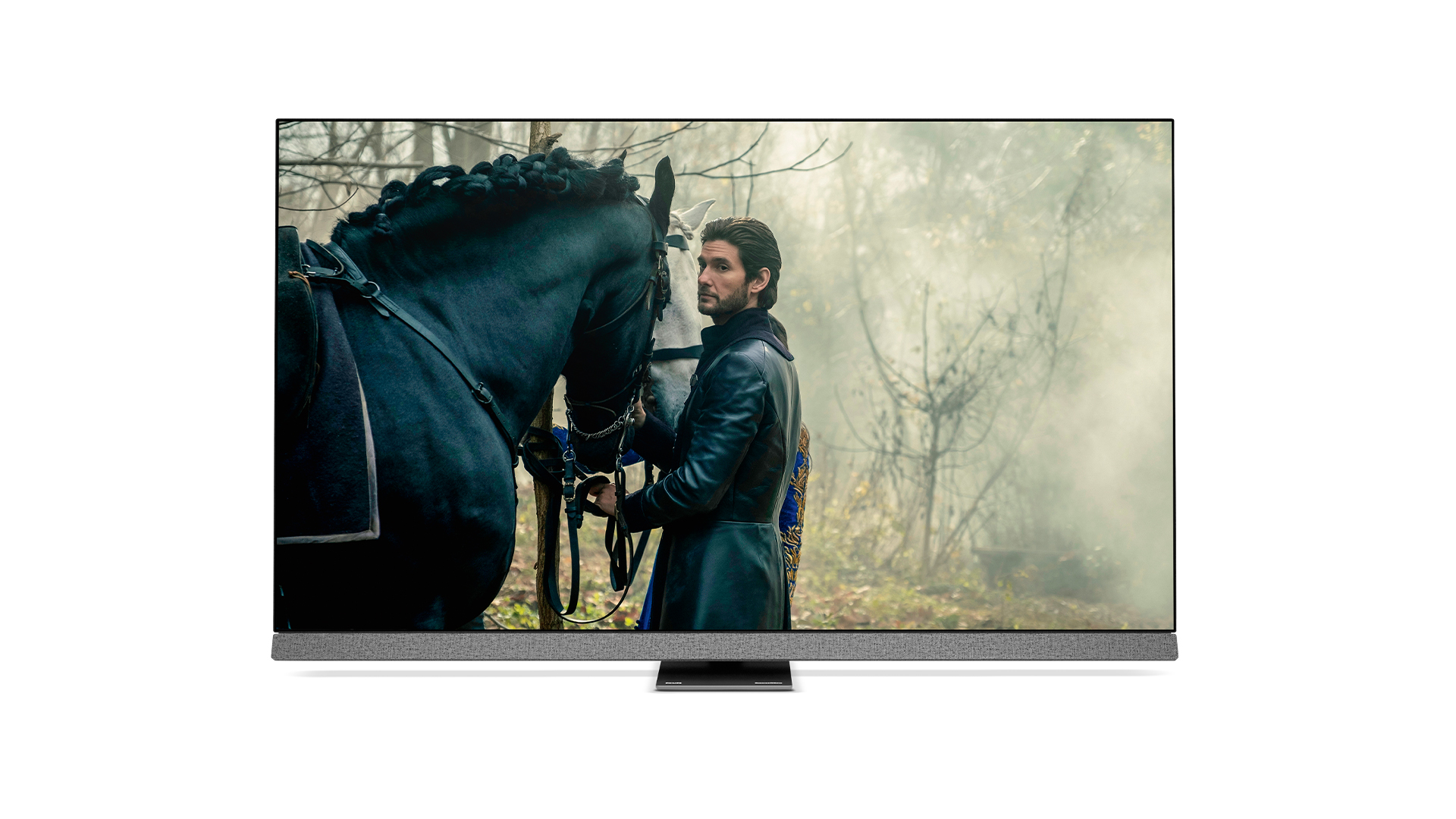What Hi-Fi? Verdict
While it’s expensive for a 55-inch TV, its pictures rock and its impressive sound largely negates the need for a soundbar
Pros
- +
Spectacular but still balanced picture
- +
Powerful, detailed audio
- +
Beautiful Ambilight-backed design
Cons
- -
A couple of Dolby Vision niggles
- -
Complicated set-up menus
- -
Only two full HDMI 2.1 ports
Why you can trust What Hi-Fi?
Like all step-up models in any TV range, the Philips 55OLED907 has two core questions to answer: is it clearly better than its cheaper siblings, and how much worse is it than its more expensive siblings? In the 55OLED907’s case, these already tough questions come with extra pressure thanks to Philips’ cheaper OLED807 and more expensive OLED937 TVs both already securing glowing five-star reviews from us.
Can the OLED907 really stake a claim for itself amid such potent company, or will it end up caught between a rock and a hard place?
Price
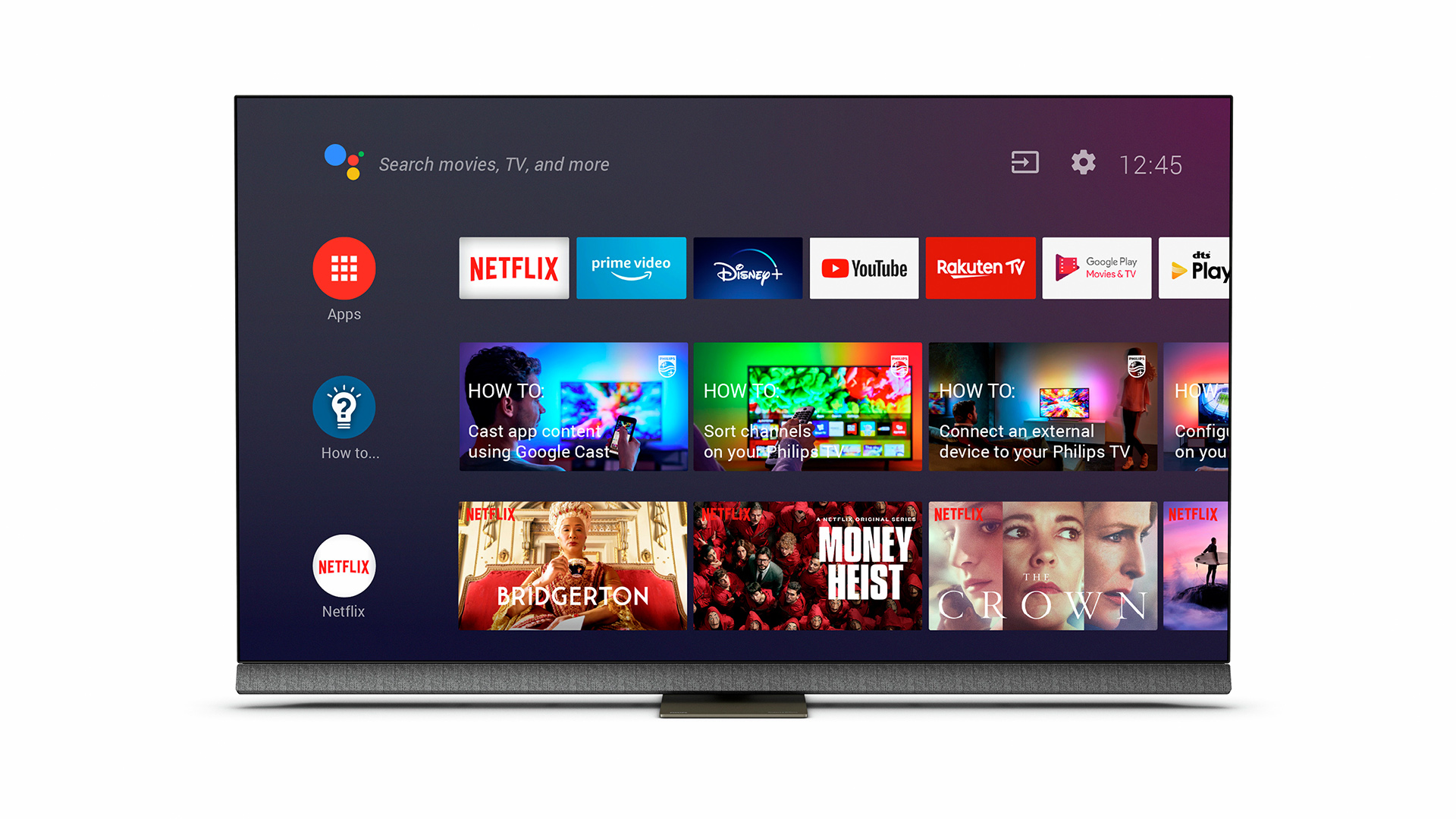
The 55-inch 55OLED907 comes to us via Philips Europe, meaning it’s not available in the US (where the Philips brand is still owned by Funai). It’s also not available in Australia, where Philips doesn’t seem to have been active for a couple of years now.
That leaves us with just its £2199 (around $2650 / AU$4000) UK price to consider – and it has to be said that at first glance this looks a little steep. Especially when you consider that you can now get Sony’s XR-55A95K QD-OLED TV for the same price, while Samsung’s QE55S95B (also QD-OLED) currently costs just £1599 / $1600 / AU$2995).
Philips’ own 55OLED807 OLED TV only costs £1399 (around $1690 / AU$2550) these days, too – and while the step-up Philips 65OLED937 costs considerably more, at £3199 (around $3860 / AU$5835), that’s only available in a 65-inch screen size.
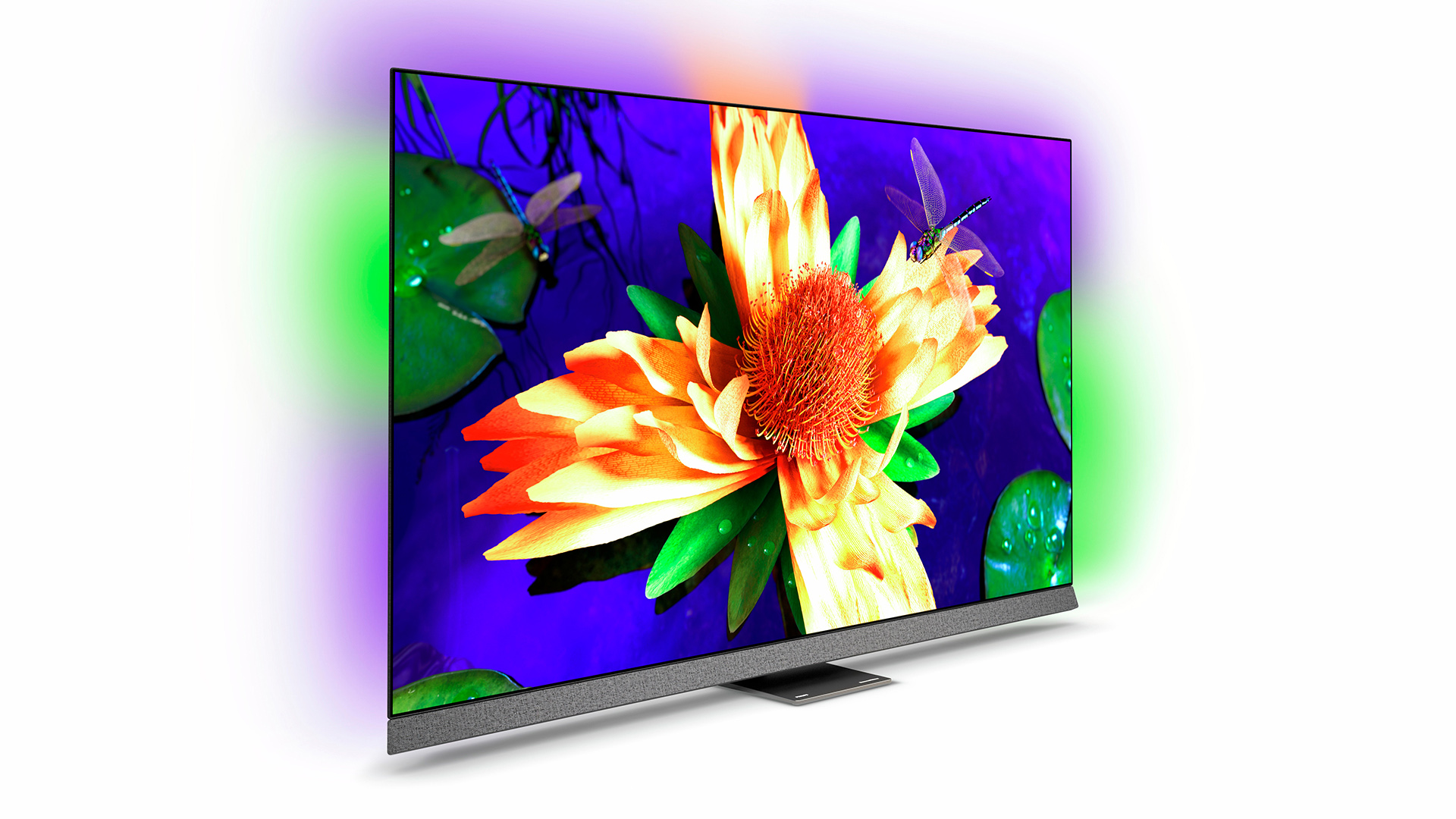
Screen size 55 inches (also available in 48 and 65 inches)
Type OLED
Resolution 4K
HDR formats HLG, HDR10, HDR10+, Dolby Vision
Operating system Android TV
HDMI inputs x4
HDMI 2.1 48Gbps x 2
Gaming features 4K/120Hz, VRR, ALLM, Dolby Vision game mode
ARC/eARC eARC
Optical output? Yes
Dimensions (hwd, without stand) 75 x 123 x 6.9cm
The QD-OLED price comparisons are particularly awkward. However, Philips has a proven track record of getting more punch and dynamism out of ‘traditional’ WOLED technology (the ‘W’ is for ‘White’, because these OLED panels have a white sub-pixel while QD-OLED panels do not) than most, if not all rivals, and the 55OLED907 does benefit from one of Philips’ so-called ‘royal’ panels, where premium ‘EX’ technology combines with a heat sink to unlock more brightness.
The process of justifying the 55OLED907’s price is also bolstered by its use of an unusually powerful integrated audio system designed by renowned hi-fi brand Bowers & Wilkins, and a premium version of Philips’ spectacular Ambilight design feature.
We have spotted one or two independent retailers discounting the 55OLED907 quite heavily to around £1799 at the time of writing, at which price it becomes seriously good value. As the higher price is still being applied by the biggest retailers, though, we’ll stick with that for the purposes of this review.
Design
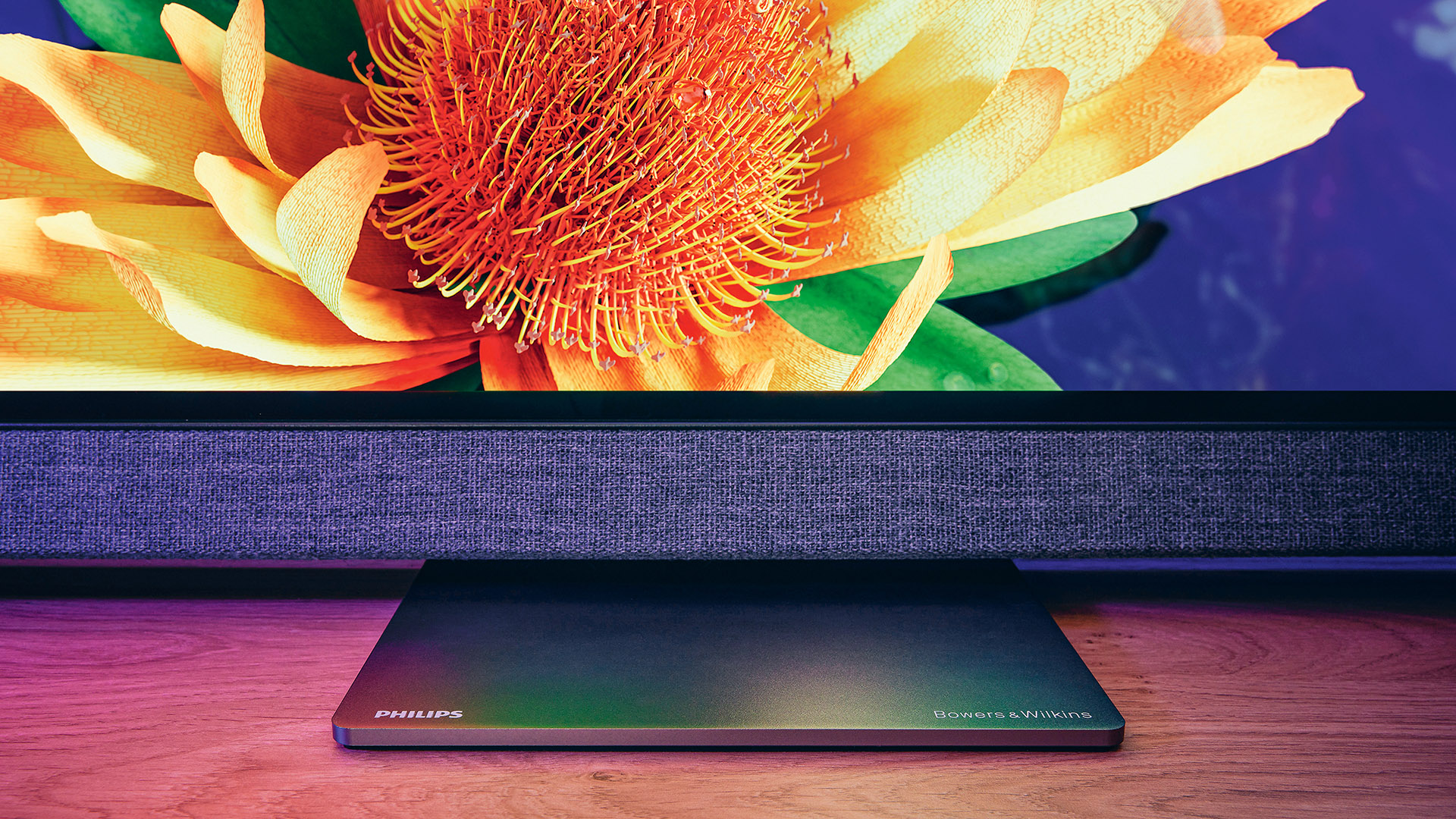
As with all of Philips’ current OLED TVs, the 55OLED907 is a gorgeous bit of kit. The frame around the screen is so skinny you can barely see it, and the set’s rear is incredibly slim – less than a centimetre – behind the top, left and right edges.
Inevitably the 55OLED907’s rear has to accommodate a more substantial section containing connections, processing, speakers and the Ambilight LEDs over the central portion of its bottom half, but you need to be looking at the TV from a pretty severe angle before this bulkier bit becomes visible past the ultra-skinny edges.
Build quality is outstanding too, for both the lovely metallic finish to the OLED panel’s rear and the heavy duty dark grey metal stand the TV sits (and can be rotated) on if you’re not wall mounting it. This desktop stand is slim and centrally mounted, enabling the TV to be placed on a narrow bit of furniture.
The star of the 55OLED907’s show, though, is Ambilight. This finds LEDs ranged around three of the TV’s rear sides casting out coloured light that can be set to deliver either ambient effects or track the colour content of the images you’re watching.
The image tracking feature of Ambilight has been enhanced for Philips’ latest premium TVs by enabling each individual LED to output its own light level and colour, rather than the same light and colour being output by groups of LEDs as was the case previously. There’s also a new Ambilight Aurora feature that lets you use Ambilight to create an ambient effect in your room when you’re not actively watching TV.
The glamorous TV is accompanied by an equally glamorous remote control. This features a silvery metallic front and a lovely Muirhead leather rear, and its large but well-balanced shape makes it a joy to hold. The button layout isn’t particularly helpful/logical, though, aside from the appearance of a quartet of direct streaming app access buttons near the top.
Features
With so many OLED hardware and processing variations now available for Philips’ OLED TV ranges to pick from, the OLED907 manages to define itself fairly clearly against other models in Philips’ latest range. So for starters, it improves on Philips’ cheaper OLED807 by a) adding a heat sink to its premium EX panel, which should enable it to run even more brightly, and b) integrating a more powerful 80W sound system that’s been designed in conjunction with the gurus at speaker brand Bowers & Wilkins. It differentiates itself from the more expensive OLED937, meanwhile, by not using that flagship model’s dual chipset processor, and by not deploying such a large, powerful and externalised speaker system.
The 55OLED907 does join its siblings in using Philips’ latest P5 Generation 6 picture processing engine, though its use of a single-chip processor means it lacks the Advanced HDR frame by frame tone-mapping feature of the OLED937, as well as a few other AI-related bells and whistles.
The P5 processor continues with its usual focus on improving what Philips defines as the five key pillars of picture quality – colour, contrast, sharpness, source detection and motion – via dozens of carefully ordered processing stages. The main new addition for the sixth generation of P5 is a series of functions aimed at optimising the picture automatically for different ambient light conditions.
Other key new features introduced for Philips’ current OLED range are IMAX Enhanced certification, signifying that the TV has been assessed as good enough to deliver the full picture quality benefits of the IMAX Enhanced mastering format, as well as a Gaming Bar that provides at-a-glance information on the signal your console or PC is putting out, and streamlines access to specifically game-related picture and sound adjustments.
Sticking with the gaming theme, two of the provided four HDMIs are full 48Gbps affairs capable of supporting 4K/120Hz, VRR (including the AMD Freesync and Nvidia G-Sync variants), and ALLM. Note, though, that slightly frustratingly you have to manually choose an ‘Optimal (Game)’ setting for the HDMI port you’ve got your console connected to if you want to enjoy VRR.
In its Game mode the 55OLED907 takes just under 20ms to render its images. That’s slightly higher than the 55OLED807, oddly, but slightly less than the OLED937. It’s also around double the number we’re getting now from some TVs, including LG’s OLEDs, but in truth only the most serious gamers will feel that this has a significant impact on their gaming skills.
It’s a pity that all four HDMIs don’t support the full array of cutting edge gaming features, perhaps, but at the moment, at least, there probably aren’t too many households out there with more than two gaming sources that actually need full 2.1 support to deliver their maximum performance.
The 55OLED907’s single-chip processor actually yields a key gaming advantage over the dual-chip one found in Philips’ OLED937 flagship TVs, in that provided you set its picture preset to HDR Monitor rather than HDR Game, the TV will play 4K/120Hz sources in their full resolution, rather than showing them with a halved vertical resolution as happens with the OLED937.
Philips provides options in its huge onscreen menu system to tweak or turn on/off a vast range of picture processing elements. For the most part we welcome this, as it gives you lots of control over a welter of processing features that aren’t always as helpful as they think they are in their default settings. Be warned, though, that Philips’ setting generosity does create an intimidatingly extensive onscreen menu environment.
The 55OLED907’s potent picture mix is joined by a promising audio set -up. Running along the full width of the TV’s bottom edge is a felt-covered speaker enclosure that contains forward-facing drivers delivering the business end of an 80W, 3.1-channel sound system, supported by a trio of large low frequency drivers on the TV’s rear. As mentioned earlier, this speaker system has been designed in conjunction with Bowers & Wilkins – a collaboration that’s yielded some outstanding audio results on previous Philips TVs.
Smart features on the 55OLED907 come courtesy of Android TV, backed up by Freeview Play to deliver the few UK terrestrial broadcaster catch-up apps that Android doesn’t cater for.
Android TV still feels a little dictatorial, cluttered and unfocused for our tastes, but it is much better than it used to be, and the 55OLED907 is powerful enough to run it fairly slickly and stably.
Picture
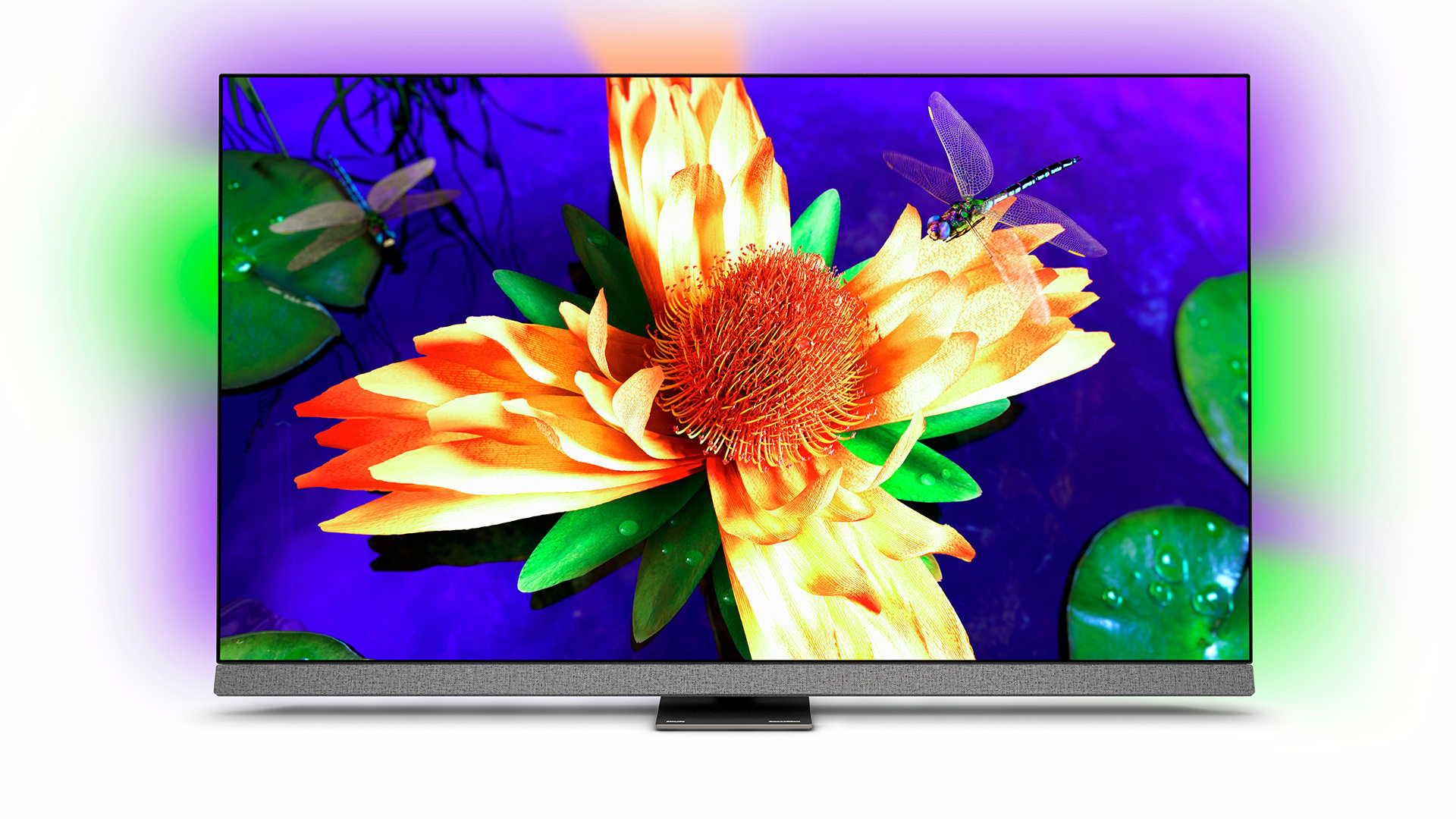
Despite lacking a few of the auto optimisation tricks found on the OLED937, the 55OLED907 produces some of the most all-round gorgeous pictures we’ve ever seen.
The overriding reason for this is that Philips seems now to have found a sweet spot between achieving its historically aggressive approach to TV pictures and the unwanted side effects that satisfying those aggressive tendencies used to cause. The 55OLED907 also, though, continues Philips recent conversion to catering, sensibly, for a wide variety of image tastes, including fans of mastering accuracy, making it a TV that anyone can love.
Diving more deeply into the specifics of what makes the 55OLED907’s picture quality tick, the single most striking strength is its phenomenal contrast. At the light end of the spectrum, while it can’t quite match its QD-OLED rivals for brightness, the quality of Philips’ tone mapping, image analysis and panel driving delivers brightness peaks (especially in the very small areas that really help sell an HDR experience) with a level of purity and intensity that even QD-OLED struggles to match. And the 55OLED907 manages to reproduce these uber-intense brightness peaks alongside gorgeously deep black levels that maintain their inky depths more consistently than those of the two QD-OLED TVs we’ve seen to date.
There’s remarkably little ‘clipping’ of detail and shading in the 55OLED907’s gleaming HDR peaks either, ensuring that they feel like a natural, integrated part of the picture. What’s more, the 55OLED907 manages to deliver strikingly intense highlights even within bright pictures – an eye-catching achievement that does a great job of making full-screen bright images look much punchier than they typically do on OLED screens.
The unexpectedly bright look to the 55OLED907’s pictures feeds into its colour performance, too, helping it produce a gorgeously intense and rich palette that instantly refutes the idea that WOLED TVs inevitably have to look desaturated when they’re running brightly. In fact, in the 55OLED907’s most aggressive Crystal Clear picture setting some colours can actually feel a little over-saturated.
The HDR Personal preset, though, does an excellent job of delivering a gorgeously rich image without any tones becoming cartoonish, and without subtle tonal shifts and blends being in any way compromised by Philips’ quest for picture punch.
On the contrary, another huge attraction of the 55OLED907’s pictures is how refined they look. There’s a degree of subtlety in its use of light, contrast and colour toning that brings pictures to life with a depth, three-dimensionality, sharpness and directness that’s a cut above arguably anything we’re seeing from any other brand of OLED TV at the moment.
There was a time when this sort of intense sharpness and detailing on a Philips TV might have felt forced and unnatural. Now, though, the quality of Philips’ picture processing is so good, especially when it comes to dealing with image noise, that you just feel as if the 55OLED907 is simply showing you more of the detail that’s actually in a source, rather than it just giving everything an artificial sharpness boost.
This same sense of powerful processing delivering tangible picture benefits without messing things up with unwanted digital side effects extends into the 55OLED907’s motion handling, too. The Movie or Pure Cinema motion modes both do a fantastic job of making judder feel less pronounced without introducing either the soap opera effect or the sort of blurry haloing, flickering and twitching artefacts associated with Philips motion processing in days gone by.
We should say that most of the glorious picture results we’ve just described were achieved using the 55OLED907’s HDR Personal preset. While we’d anticipate this being the all-round favourite preset for most users, though, it’s important to stress that the TV’s other presets also all cater very nicely for different picture tastes and needs. The Filmmaker Mode, in particular, plays it very straight indeed when it comes to tracking industry standards with minimal manual intervention. You might find this mode looks a bit flat and muted if you’ve spent much time watching the HDR Personal mode, but that’s only because the HDR Personal mode does such an excellent, well-rounded job of injecting more potency into the picture. It doesn’t mean the Filmmaker Mode is in any way ‘off’.
Creative intent fans will also like to know that Philips provides a pair of Dolby Vision video presets, Dolby Vision Dark and Dolby Vision Bright. Unexpectedly, though, Philips actually defaults to its HDR Personal mode with Dolby Vision sources, requiring you to manually select the Dolby presets if you want to use them. While this is unusual, it could be because neither of the Dolby Vision presets look quite right: the Dark option seems to crush shadow detailing and the Bright option applies some slightly uncomfortable motion processing by default, and also continues to exhibit a little black crush.
Dolby Vision sources also play with a little more blocking noise in them than we tend to see with other TVs – something we’ve noticed across other 2022 Philips TVs too. This only appears under fairly specific circumstances, but it’s still worth mentioning – especially with a TV that’s otherwise so good we’re honestly struggling to find anything bad to say about it.
Pretty much the only other negatives we can point out are that the new Ambient modes tend to leave the picture too dark (so should be turned off), and that the overall excellent noise reduction system Philips deploys with most of its out of the box presets can smooth filmic grain away.
The 55OLED907’s beautiful pictures deserve to have us finish on a high, though. So let’s wrap this section up by praising its outstanding upscaling of HD sources, which end up genuinely looking close to 4K, and its gaming chops, which see HDR games delivered with a combination of purity, precision and vibrancy that’s simply a joy to behold. Especially if you’re playing at 120Hz.
Sound quality
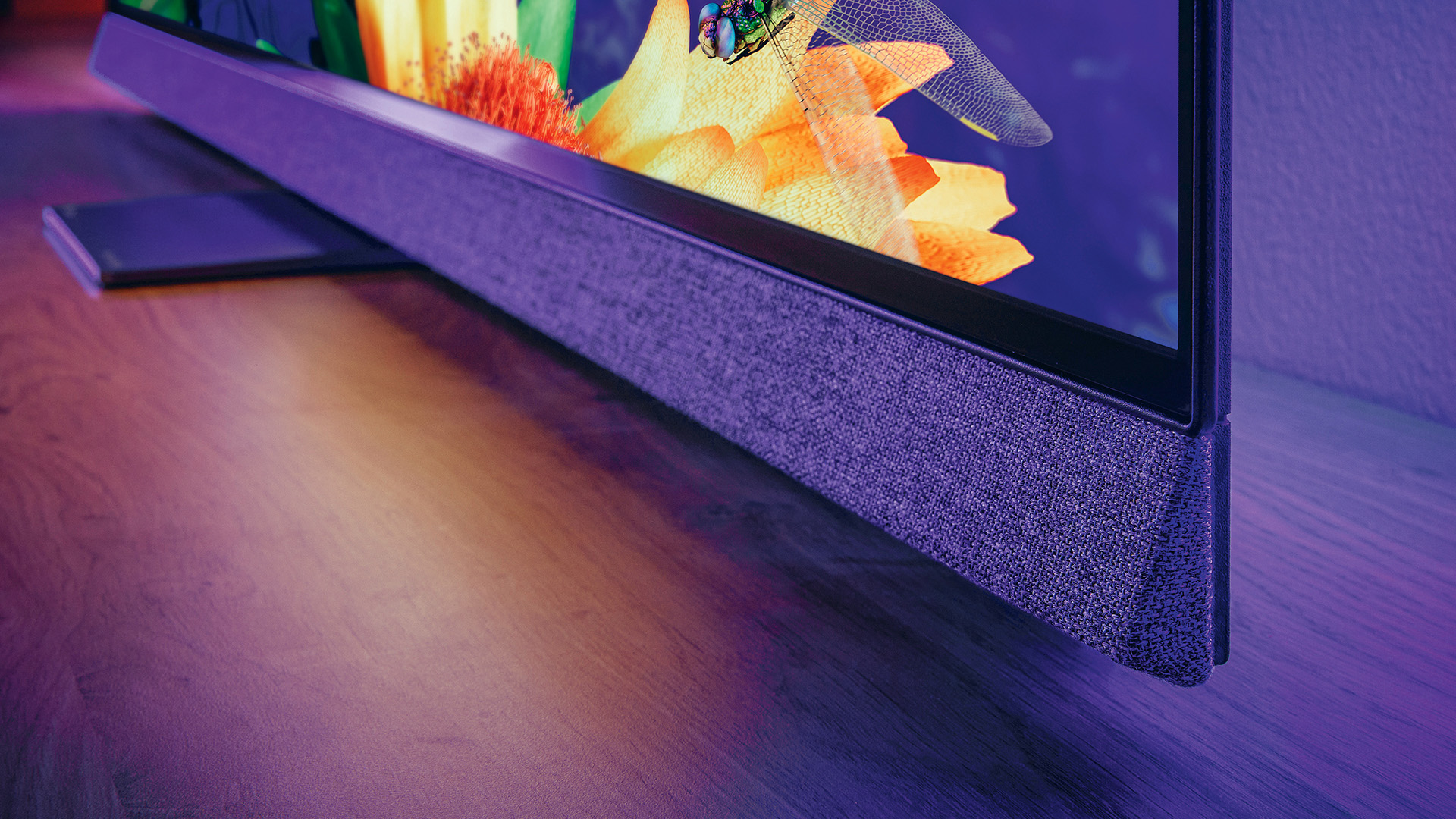
The 55OLED907 sounds almost miraculously good for a TV that accommodates its speaker set-up in such a compact design. The front-facing speakers behind the felt band below the screen are far more powerful than you’d think possible, pushing huge quantities of sonically charged air forwards into your room. This instantly delivers much more impact and directness than the majority of integrated TV sound systems.
The sound doesn’t just emanate forwards with impressive conviction, though. It also projects a good distance left, right, and even upwards. The last of those proves very handy when it comes to the 55OLED907 being able to do surprisingly effective justice to Dolby Atmos soundtracks. The combination of B&W’s sound processing know-how and, perhaps, the slight angling-up of the speaker enclosure bar, means that you really do feel as if, say, a plane passing overhead in a film is flying somewhere above the TV’s screen. You can even very clearly track the sound of high objects tracking from left to right or vice versa above the TV.
The level of height control even allows the speaker system to reproduce vocals so that they appear to be coming from the right part of the screen, rather than them just emanating vaguely from the speakers tucked along the screen’s bottom edge.
The speakers are sensitive enough to bring forth lots of the detail that a good film mix might contain without anything sounding too shrill or harsh, and perhaps best of all, the bass drivers manage to churn out depths and volumes of bass most TVs can only dream about. There isn’t as much nimbleness and definition to this bass as you might get with a good soundbar or external subwoofer, but that’s hardly surprising. What is surprising is how the 55OLED907 manages to push out as much bass pressure as it does – particularly if you haven’t got the screen pushed right up to your wall – without succumbing to distortions, drop outs or cabinet ‘buzzing’.
In short, the 55OLED907 sounds so good in such a variety of ways that many people will find it entirely unnecessary to add an external soundbar. Which is, of course, the point, and very handy in the TV’s bid to justify its relatively premium price.
Verdict
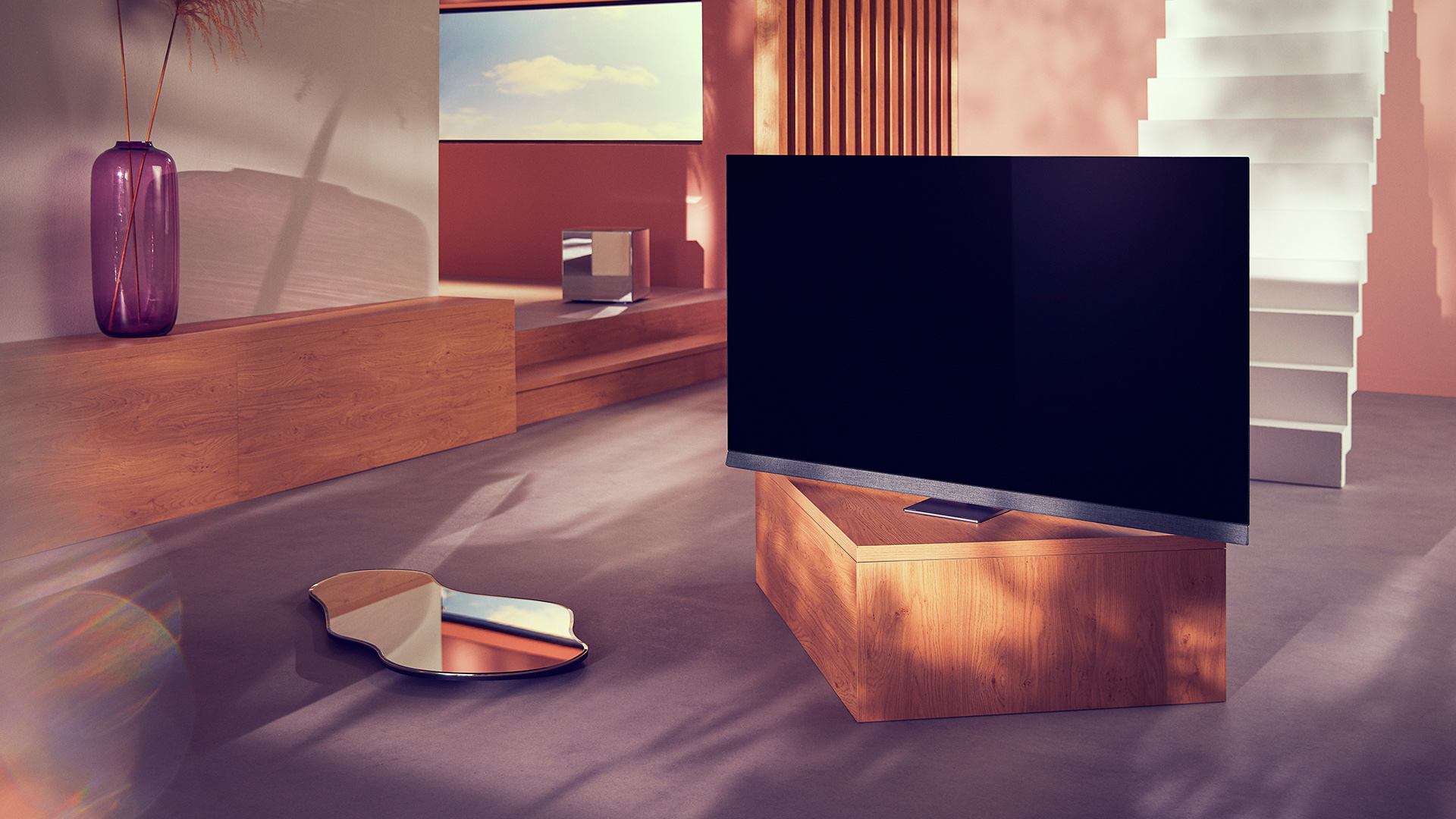
It’s tough to stand out from an increasingly talented crowd in the OLED world these days, but the Philips 55OLED907 manages it with aplomb. Everything about it oozes quality, from its gorgeously detailed, dynamic and sharp pictures to its impressively powerful sound and its beautiful, Ambilight-toting design. So while its £2199 price tag isn’t cheap, it’s hard to imagine anyone who buys one not feeling as if their new AV centrepiece is worth every solitary penny.
SCORES
- Picture 5
- Sound 5
- Features 4
MORE:
Read our review of the Sony XR-55A95K
Also consider the LG OLED65G2
Read our Philips 48OLED807 review
John Archer has written about TVs, projectors and other AV gear for, terrifyingly, nearly 30 years. Having started out with a brief but fun stint at Amiga Action magazine and then another brief, rather less fun stint working for Hansard in the Houses Of Parliament, he finally got into writing about AV kit properly at What Video and Home Cinema Choice magazines, eventually becoming Deputy Editor at the latter, before going freelance. As a freelancer John has covered AV technology for just about every tech magazine and website going, including Forbes, T3, TechRadar and Trusted Reviews. When not testing AV gear, John can usually be found gaming far more than is healthy for a middle-aged man, or at the gym trying and failing to make up for the amount of time he spends staring at screens.
-
RichSM It's worth noting that the price for the 65" version is pretty steep: £2999 at the time of writing. This is pretty much my perfect new TV, but I'll wait for a year until the prices have come down.Reply
